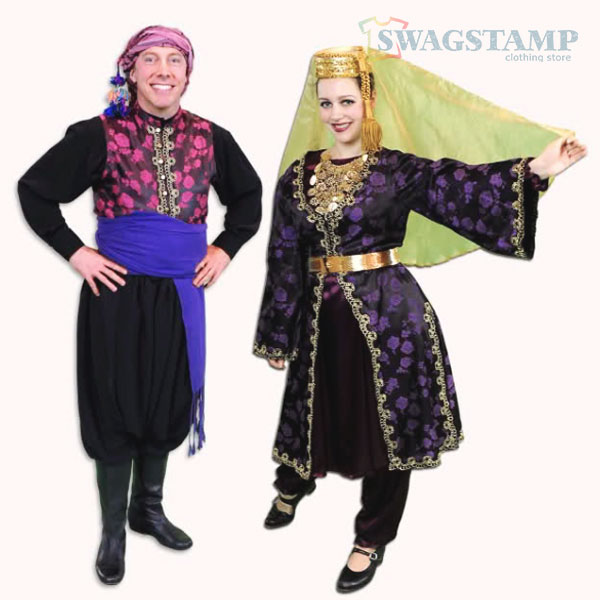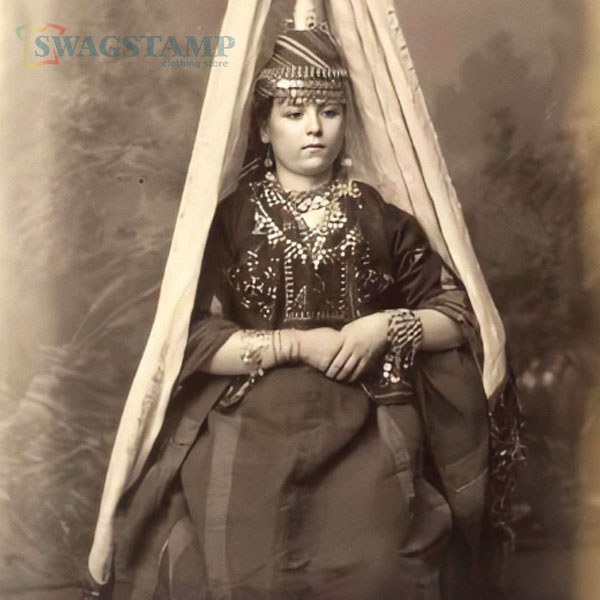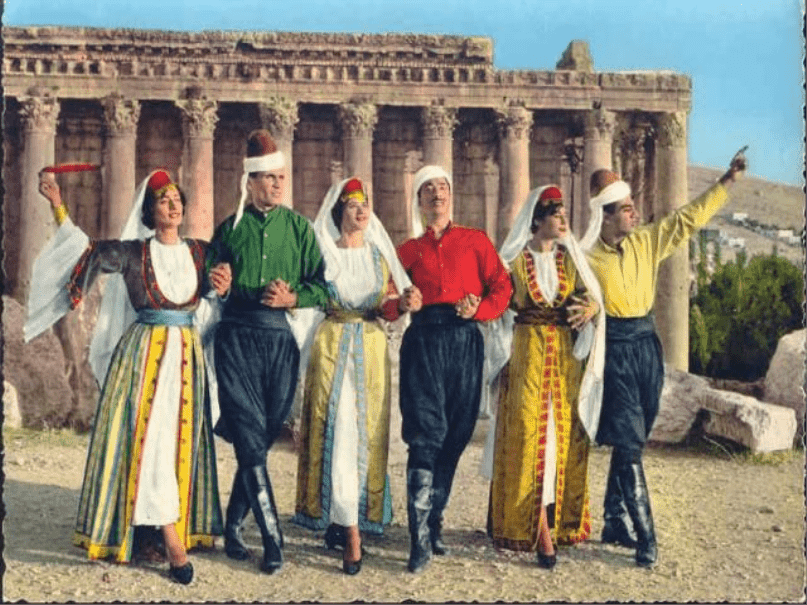Blog
Discover Lebanon’s Rich Culture with Traditional Clothing
Lebanon is known for its stunning scenery, delicious cuisine, and unique cultural heritage. One aspect of this heritage that often goes overlooked is the traditional clothing worn by Lebanese people. From intricate embroidery to vibrant colors, Lebanon traditional clothing is a reflection of the country’s rich history and diverse cultural influences.
For those who are not familiar with Lebanese traditional clothing, it can be difficult to know where to begin. Some common pain points for those interested in learning more about these garments include not knowing what types of clothing are considered traditional or feeling overwhelmed by the variety of styles available. Additionally, some people may feel unsure about the appropriateness of wearing traditional Lebanese clothing in certain settings.
The target of Lebanon traditional clothing is to preserve and celebrate the country’s cultural heritage. Traditional clothing is often worn for special occasions such as weddings, religious ceremonies, and other celebrations. Many Lebanese people also wear traditional clothing on a daily basis as a way to connect with their heritage and express their cultural identity.
In summary, Lebanon traditional clothing is an important part of the country’s rich cultural heritage. While there may be some pain points associated with learning about and wearing these garments, they are an excellent way to celebrate and preserve Lebanese culture. If you’re interested in traditional Lebanese clothing, take some time to explore the different types of garments and styles available. Whether you’re attending a special event or simply want to express yourself through fashion, there’s sure to be an outfit that suits your needs!
“Lebanon Traditional Clothing” ~ bbaz
Introduction to Lebanon Traditional Clothing
Lebanon, the small country located in the eastern Mediterranean region, is known for its rich history, culture, and traditions. One of the fascinating aspects of Lebanese culture is the traditional clothing worn by its people. Lebanon traditional clothing is steeped in heritage and reflects the country’s diverse and colorful history.
The History of Lebanon Traditional Clothing
Lebanon’s traditional clothing has evolved over time, influenced by various cultures and civilizations that have ruled the country. The Phoenicians, Romans, Ottomans, and French are some of the historical groups that have left their mark on Lebanon’s traditional clothing. The clothing is also influenced by the country’s geography, climate, and religion.
Women’s Traditional Clothing in Lebanon
Women’s traditional clothing in Lebanon is characterized by various styles and colors. They wear long dresses called abayas in Arabic, which usually come in bright colors such as red, green, or blue. The dresses have intricate embroidery and are often made from silk or fine fabrics. Some women also wear a headscarf, usually in white or black, as a symbol of modesty.
Men’s Traditional Clothing in Lebanon
Men’s traditional clothing in Lebanon is often more conservative than women’s clothing. They wear a loose-fitting garment called thawb, which is usually white or beige, and a keffiyeh headscarf, usually in black and white or red and white. The keffiyeh may also be worn as a face mask for protection from the sun, sand, or dust.
Bridal Clothing in Lebanon
Bridal clothing in Lebanon is a significant aspect of the country’s traditional clothing. Lebanese brides wear heavily embroidered and embellished gowns, usually in bright colors such as red, green or gold. The dresses are also adorned with jewelry and ornate headpieces. Brides may also wear a veil, which symbolizes the purity and modesty of the bride.
The Importance of Traditional Clothing in Lebanon
Traditional clothing plays a crucial role in Lebanese culture and identity. Wearing traditional clothing is a way of preserving the country’s heritage and passing it on to future generations. It is also a symbol of national pride and identity.
Lebanon Traditional Clothing Today
Despite the influence of modern fashion trends, Lebanon traditional clothing remains popular in various occasions, such as weddings, festivals, and religious holidays. Many designers incorporate traditional elements into their modern designs, creating a fusion of old and new styles.
Shopping for Traditional Clothing in Lebanon
If you’re interested in buying Lebanon traditional clothing, you can visit one of the many souks or markets throughout the country. Many of these markets specialize in traditional clothing and accessories, such as scarves, jewelry, and handbags.
Conclusion
Lebanese traditional clothing is not just clothing; it is an essential aspect of the country’s history, culture, and identity. Although modern fashion trends continue to evolve, traditional clothing remains an integral part of Lebanese life. Whether you’re shopping for traditional clothing or simply admiring the intricate embroidery and bright colors, Lebanon traditional clothing provides a glimpse into the country’s rich and colorful heritage.
Discover Lebanon’s Rich Culture with Traditional Clothing
Lebanon Traditional Clothing: A Cultural Icon
Lebanese traditional clothing tells the story of the country’s rich and diverse cultural heritage. It reflects the region’s religious, social, and historical factors, and it remains an essential part of Lebanon’s identity and history. The distinct styles, vibrant colors, and intricate details highlight the local artisanship and creativeness that Lebanese people are known for. From embroidered dresses to kaftans, the traditional costumes showcase the artistry of history and still enjoy popularity in modern times.

Unpacking Lebanon Traditional Clothing
In my recent trip to Lebanon, I saw how the locals wore traditional attire with pride, elegance, and conviction. One of the most striking images was a group of traditional Lebanese men complete with their kaffiyeh, headscarf, and thawb, long-sleeved cotton robe. I learned that these garments held cultural and historical significance, emphasizing the wearer’s social standing, and could signify regional differences. It was fascinating how the chiffon dresses were adorned with golden threads, sequins, and beads, echoing Lebanese women’s feminine spirit, transforming them into a stunning vision of beauty.The traditional attire is an expression of cultural identity, unity, and national pride. Though older generations have more knowledge about traditions and customs, they still hold significant contemporary relevance. Activists, for instance, wear t-shirts, hoodies, and sportswear with prints that honor the legacy of Lebanese traditional wear. They also run campaigns that educate the public on the symbolism behind specific garments and ways to preserve them amidst modernization.In conclusion, Lebanon traditional clothing is more than just an outfit; it’s a cultural icon that reflects a vast array of customs and traditions, conveying the country’s rich history and heritage. It is essential to keep traditional wear alive as it is not merely a sign of national identity, but it serves as a cultural bridge that connects the present with the past, reminding us of the values that stood the test of time. Whether one is a local or a visitor, wearing traditional clothing offers a unique cultural experience, and it’s something that should be cherished across generations.
Lebanon, a country located in the Middle East, has a rich cultural heritage that dates back thousands of years. One of the most fascinating aspects of this culture is its traditional clothing. Here we will answer some questions about Lebanon Traditional Clothing and explore what makes it so unique.
Question and Answer
Q: What is traditional clothing in Lebanon?
A: Traditional clothing in Lebanon varies depending on the region and religious background. However, it usually includes long dresses and skirts for women and loose-fitting pants and shirts for men.
Q: What are the materials used for traditional clothing in Lebanon?
A: Traditional clothing in Lebanon is often made from high-quality materials such as silk, cotton, and wool. These materials are chosen for their luxurious texture and durability.
Q: What are the colors typically used in traditional clothing in Lebanon?
A: Traditional clothing in Lebanon is often brightly colored and adorned with intricate patterns. Common colors include red, green, blue, and gold.
Q: What are some traditional accessories worn with Lebanese clothing?
A: Traditional accessories worn with Lebanese clothing include jewelry, such as necklaces and bracelets, and headscarves for women. Men often wear hats and belts.
Conclusion of Lebanon Traditional Clothing
Lebanon’s traditional clothing is a testament to the country’s rich history and cultural diversity. Its unique designs and use of high-quality materials make it a prized possession for those who wear it. Whether you’re interested in learning more about the country’s traditional clothing or simply admiring its beauty, Lebanon’s clothing is sure to leave a lasting impression.
Lebanon Traditional Clothing
Lebanon, located in the Middle East, has a rich cultural heritage that is reflected in its traditional clothing. Lebanese traditional clothing is a reflection of the country’s diverse history and cultural influences. The clothing is characterized by its intricate embroidery, vibrant colors, and unique designs. The traditional clothing of Lebanon is an important aspect of the country’s culture and is still worn on special occasions.

Target of Lebanon Traditional Clothing
The target of Lebanon traditional clothing is to showcase the country’s rich cultural heritage. It is meant to honor the traditions and customs of Lebanon and serves as a way to connect with the past. The clothing is also a way to express one’s identity and is often worn during special occasions such as weddings, festivals, and other cultural events.Growing up in Lebanon, I have always been fascinated by the traditional clothing worn by my elders. I remember attending weddings and being in awe of the intricate embroidery and vibrant colors of the dresses. As I grew older, I began to appreciate the significance of traditional clothing in Lebanese culture. The clothing serves as a way to connect with our history and heritage and is an important part of our identity.Lebanon traditional clothing includes a variety of garments such as the thobe, a long dress with intricate embroidery, and the kaftan, a loose-fitting robe adorned with beads and sequins. The clothing is often made from silk, cotton, or wool and is designed to be comfortable and easy to move in. The embroidery on the clothing is often done by hand and is a reflection of the skill and craftsmanship of the Lebanese people.In conclusion, Lebanon traditional clothing is an important aspect of the country’s culture and heritage. It serves as a way to connect with our past, express our identity, and honor our traditions. The intricate embroidery, vibrant colors, and unique designs of the clothing are a testament to the skill and craftsmanship of the Lebanese people. Whether worn on special occasions or displayed in museums, Lebanon traditional clothing will continue to be an important part of our cultural heritage.

